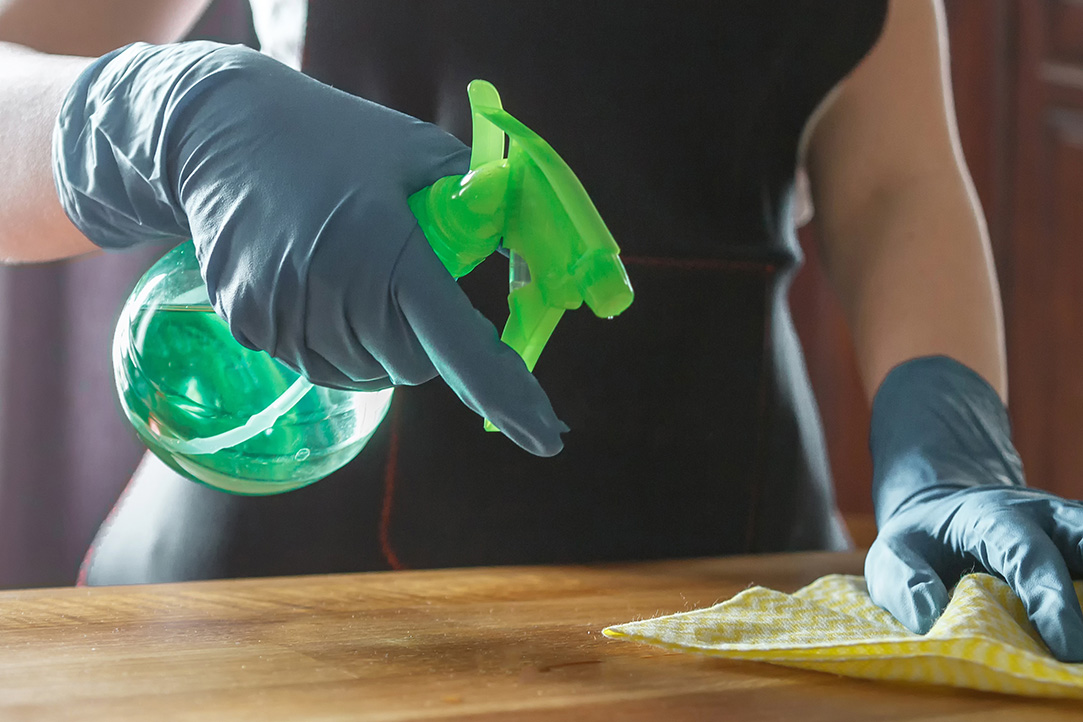

How To Develop Your Green Cleaning Program
By Grainger Editorial Staff 7/7/22


Going green doesn't have to be hard. Green cleaning programs can help your facility hit sustainability targets, improve employee health and increase productivity. Getting started with a green cleaning program, or getting your existing program certified, is now easier than ever. Choosing the right practices and products can help you create a program that lasts.
What Is a Green Cleaning Program?
Green cleaning programs demonstrate that your organization values sustainability, employee health and effective cleaning. Green cleaning programs are designed to replace traditional cleaning substances and practices with more sustainable options. According to Facility Executive, between 30-50% of United States businesses have adopted a green cleaning program.
Health Benefits of Green Cleaning
Green cleaning programs have the potential to improve employee health. Not only can these programs help facilities reach environmental goals, but they can also increase productivity.
A six-day study by Harvard University's School of Public Health tested subjects in different work environments with varying degrees of indoor air quality. Findings confirmed that those working in green+ environments (those working in green conditions with better ventilation) had nearly double the cognitive performance on tests than those working in more conventional work environments. Employee productivity is also said to improve in workplaces that adopt green cleaning programs, by reducing time lost on the job due to sick days or allergic responses to certain chemicals.
How to Implement a Green Cleaning Program
Green cleaning programs focus on several key changes to your existing cleaning strategy. Business should start with realistic goals and timelines and slowly move existing cleaning practices to green alternatives. This is the best way to ensure success and continued sustainability. Continue to look for green alternatives and ways to improve your cleaning process. This can also help you reach your sustainability goals sooner.
Define leaders and goals: First, designate leaders to implement the changes and set realistic goals. Identifying those in the organization who are passionate about sustainability and will actively champion green efforts can make it easier to create a successful program. It's also important to set clear goals for the green cleaning program that are specific and time-based. For example, you may set a goal to replace all cleaning chemicals with green alternatives within a quarter.
Communicate and train: The success of your green cleaning program depends on the everyday cleaning activities in your facility. Communicating your plan early, engaging staff for ideas and conducting training can increase support for a green cleaning program. Green cleaning products and practices may work differently than traditional approaches and your staff may need extra training to use products correctly.
Migrate existing practices: Once you have a team and a plan, you can begin to replace existing cleaning practices with green alternatives. You can start by swapping common tools like mops and brooms for greener alternatives. For example, switch out disposable mop heads with those that can be washed and re-used. According to the U.S. Green Building Council, facilities seeking to earn green cleaning points toward LEED certification should look to replace powered janitorial equipment with alternatives that reduce noise and exhaust and use an environmentally friendly power source.
Swap out cleaning products: According to the EPA, green alternatives are often labeled and generally avoid using certain chemicals. Green products should also use naturally occurring and renewable ingredients, mix easily with cold water to save energy and avoid fragrances that can irritate employees. The EPA sponsors a program called Safer Choice to make it easier to find green products.
Continue to improve: After the initial investment in a green cleaning program, it's important to continue looking for both new opportunities to go green and for new products. Green cleaning programs should also look beyond cleaners. As an example, an effective matting strategy can prevent dirt from being carried into a facility. That reduces the amount of cleaning needed.
Once you’ve established a green cleaning program, you can actually get certified on your sustainable cleaning practices.
Earning Green Cleaning Certifications
You can take additional steps to validate the effectiveness of your green cleaning program and publicly share your commitment to sustainability. Green Seal is a non-profit organization dedicated to identifying green products and businesses. Its certification program is designed to drive businesses toward safer and more sustainable cleaning programs, with certifications to help consumers identify green products and businesses.
Green Seal regularly reviews consumer and commercial cleaning products, with a focus on sustainability and health. Products must meet standards to protect human health, preserve the climate, ensure clean water and minimize waste. Any product carrying the Green Seal logo has been certified by the organization. Your facility can quickly take steps to introduce a green cleaning program by using Green Seal certified products.
The United States Green Building Council (USGBC) offers guidance for establishing your facility's green cleaning program, and LEED certifications to demonstrate competencies in specific green building topics.
Certifications demonstrate your company's extra commitment to environmental protection and human health. And if you have an existing program, getting your program certified is a worthy goal. If you haven't already implemented a green cleaning program, it's an important first step toward reaching your organization's larger sustainability goals with the added benefit of improving the health and safety of your building's occupants.
The information contained in this article is intended for general information purposes only and is based on information available as of the initial date of publication. No representation is made that the information or references are complete or remain current. This article is not a substitute for review of current applicable government regulations, industry standards, or other standards specific to your business and/or activities and should not be construed as legal advice or opinion. Readers with specific questions should refer to the applicable standards or consult with an attorney.






